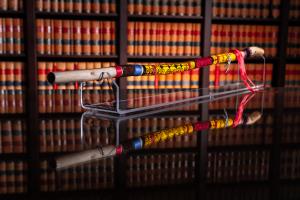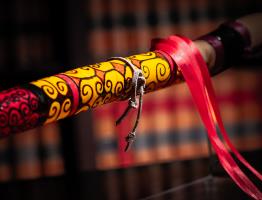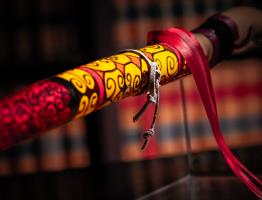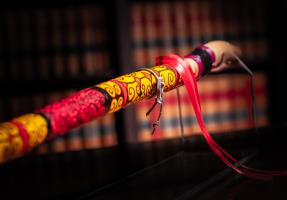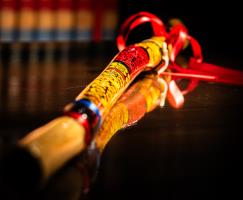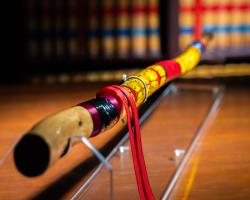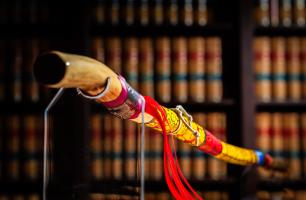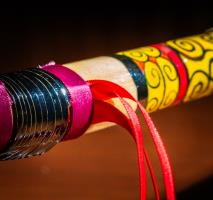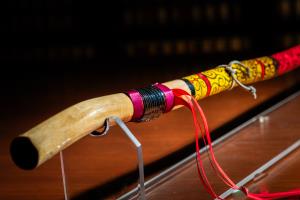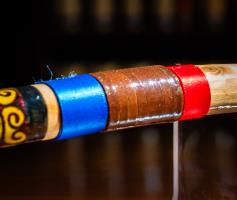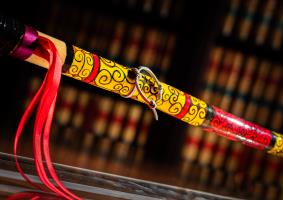Talking Stick
In many Indigenous cultures, a talking stick serves as a reminder to the holder to speak, and for listeners to listen, respectfully. It is a worthy reminder for members of Parliament and others who may speak, or listen, during intense periods of debate inside the Commons chamber.
In 1989 the Assembly of First Nations presented this talking stick to Member of Parliament and Cree Chief Wilton “Willie” Littlechild, and requested that he present it to the government.
The stick is of heavily lacquered wood, possibly white cedar, with leather strands, painted swirls in black, yellow and red, and ribbons of red, blue and purple.
It is prominently displayed in the Speaker’s Chambers, a fitting reminder of the important role played within our Parliamentary system.
